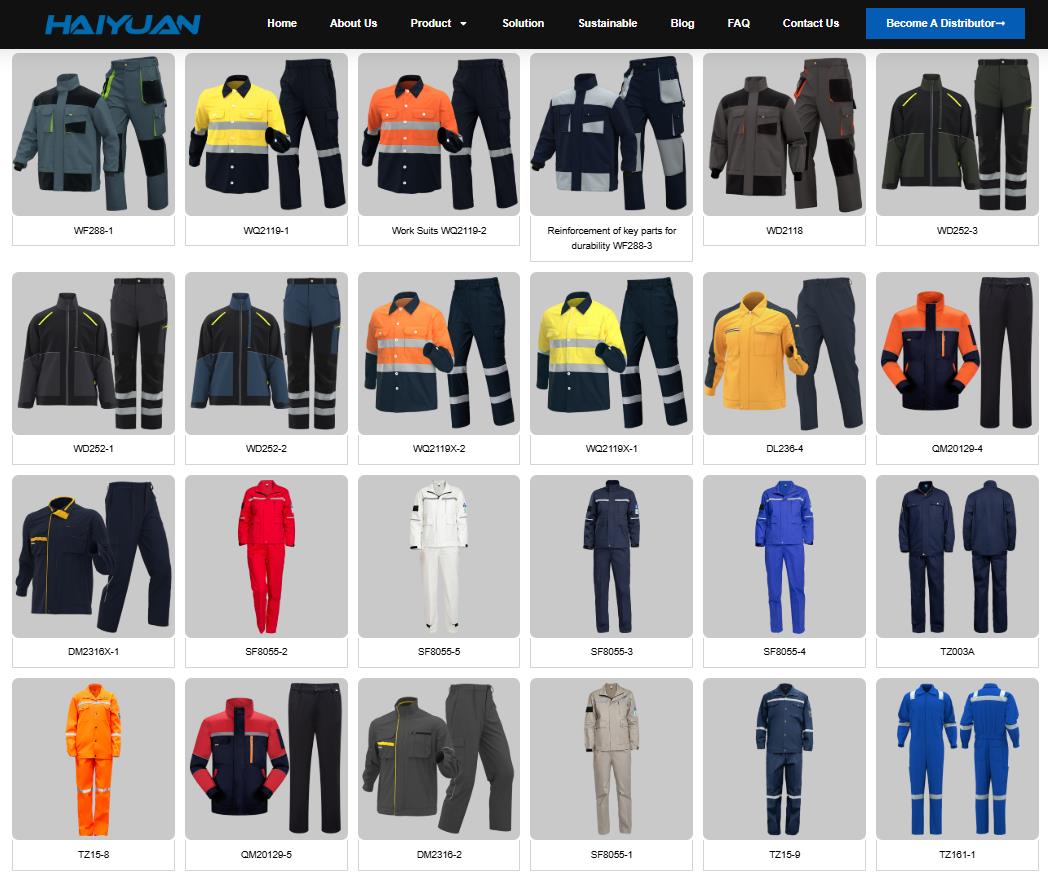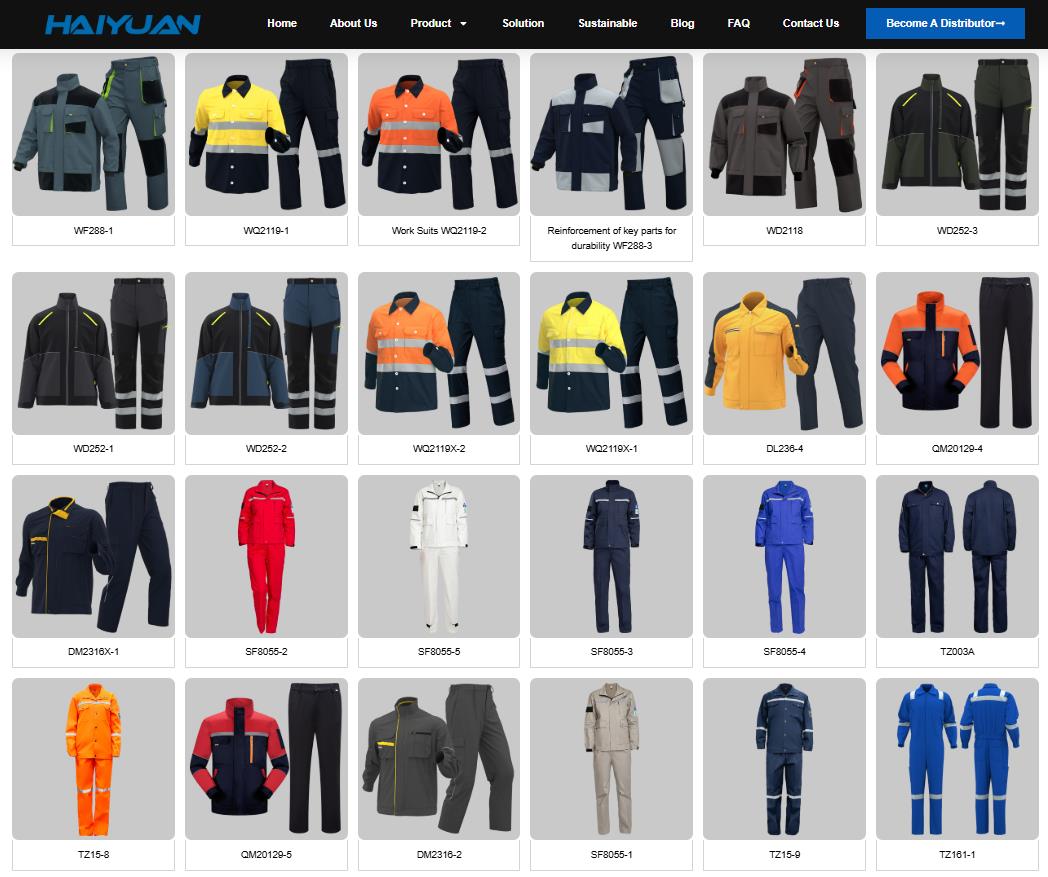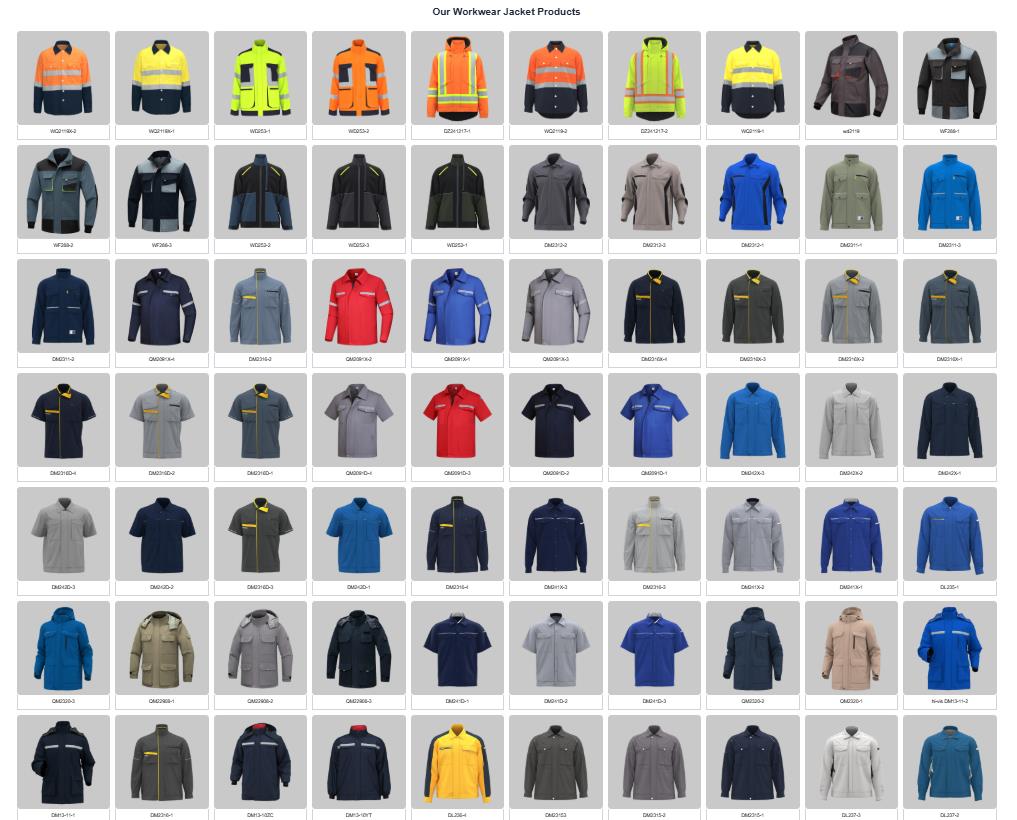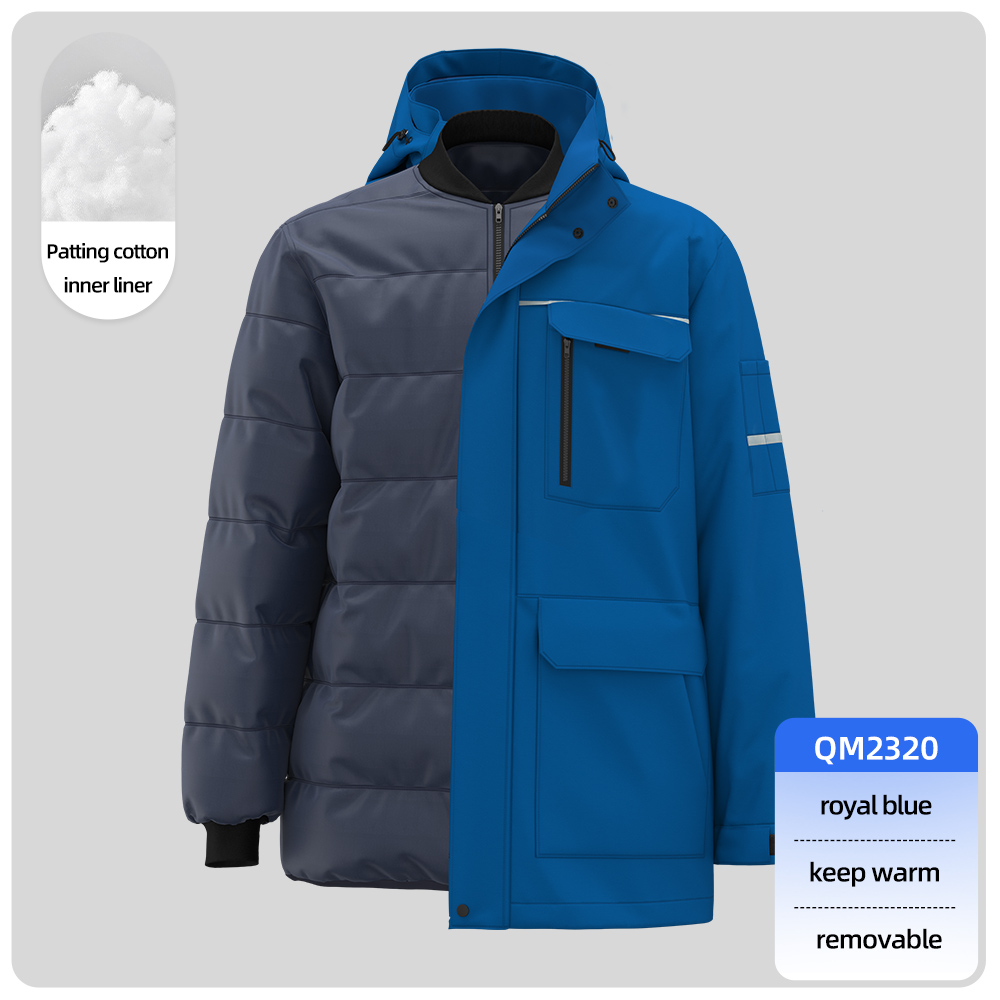Here’s a breakdown of the process and key considerations for a Cambodian company importing custom logo work uniforms from China:
Key Advantages of Sourcing from China
-
Cost-Effectiveness: Generally lower manufacturing costs (labor, materials, economies of scale).
-
Manufacturing Capacity: Vast number of factories specializing in garments, textiles, and workwear.
-
Customization Expertise: Factories experienced in embroidery, printing (screen, DTG, heat transfer), and tailoring to specific designs.
-
Range of Options: Access to a wide variety of fabrics, styles, colors, and accessory options.
-
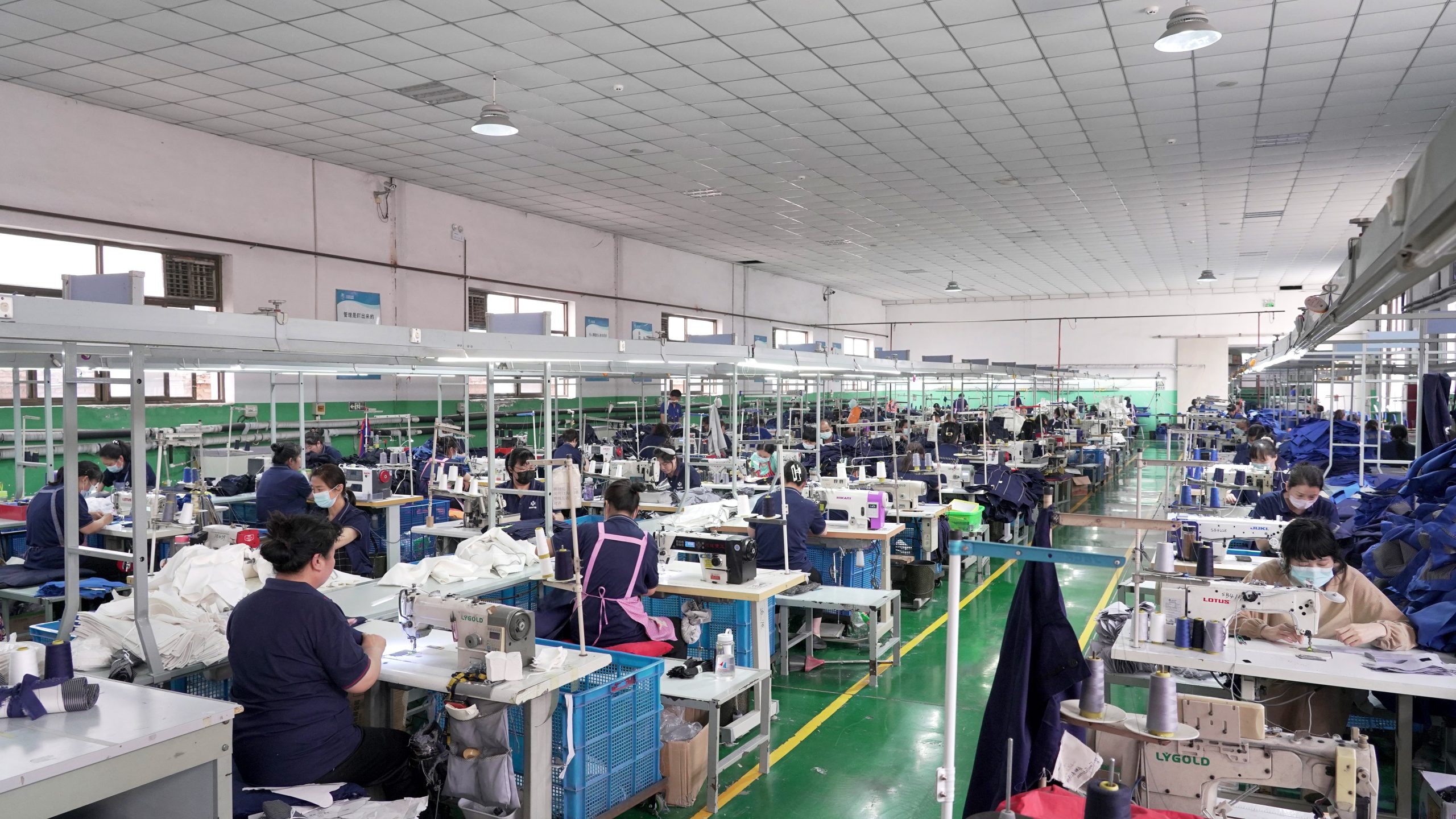
Haiyuan Work Clothes Factory Scalability: Ability to handle both small trial orders and large bulk production runs.
Step-by-Step Process for the Cambodian Company
-
Define Requirements Clearly:
-
Garment Specs: Type (polo, shirt, jacket, pants, coveralls?), fabric composition, weight, color(s).
-
Sizes & Quantities: Detailed size breakdown (S, M, L, XL, XXL ratios) and total quantity per style/color.
-
Logo & Branding:
-
High-resolution vector artwork (AI, EPS, PDF).
-
Exact placement (chest, back, sleeve, collar?).
-
Embroidery details (thread colors, stitch density, size) OR Printing details (type – screen/DTG/heat transfer, colors, size).
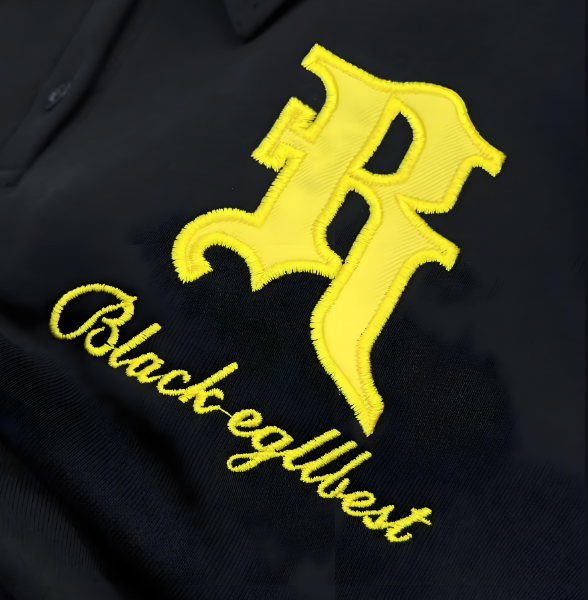
EMBROIDERY
-
-
Packaging: Individual poly bags, size labeling, hang tags, carton box specifications.
-
Quality Standards: Define acceptable tolerances (stitching, color matching, sizing accuracy).
-
-
Finding Reliable Suppliers (Factories/Trading Companies):
-
Platforms: Alibaba, Made-in-China, Global Sources. Use “Gold Supplier” or verified members.
-
Trade Shows: Canton Fair (Guangzhou), CIFF (Shanghai) – though travel might be required.
-
Sourcing Agents: Consider hiring an experienced agent in China to find factories, negotiate, and manage QC (reduces risk but adds cost).
-
Referrals: Ask within business networks.
-
Vetting: Check company licenses (business scope), factory audits (BSCI, Sedex – if ethical compliance matters), production capabilities, MOQs, communication responsiveness. Request references from existing clients, especially in ASEAN.
-
-
Requesting Quotes & Samples:
-
Send detailed RFQ (Request for Quotation) to multiple shortlisted suppliers.
-
Crucial: Pay for production samples (PP Samples) after finalizing specs and before bulk order. Evaluate fabric quality, stitching, sizing accuracy, and especially the logo application. Never skip this step!
-
-
Negotiation & Contract:
-
Negotiate unit price (based on volume), payment terms (T/T 30% deposit, 70% before shipment is common; LC offers more security), production lead time, quality control procedures, penalty clauses for delays/defects.
-
Get a detailed Proforma Invoice (PI) or Contract signed by both parties. Ensure it includes all specs, prices, payment terms, Incoterms (see below), and delivery schedule.
-
-
Production & Quality Control:
-
Deposit Payment: Pay the agreed deposit (usually 30-50%).
-
Communication: Maintain regular contact for updates.
-
Pre-Shipment Inspection (PSI): Highly Recommended. Hire a third-party inspection company (e.g., SGS, Bureau Veritas, local QC firms) to check random samples from the bulk production before shipment. Checks for quality, quantity, workmanship, packaging, and logo application against the approved sample. Costs less than fixing problems later.
-
-
Logistics & Shipping:
-
Incoterms: Agree clearly (usually FOB – Free On Board [Chinese Port] or EXW – Ex Works [Factory]). FOB is common – supplier delivers goods to port, clears export customs; buyer handles main shipping, import customs, and delivery in Cambodia.
-
Freight Forwarder: Hire a reputable freight forwarder experienced in Cambodia-China shipments. They handle:
-
Booking cargo space (sea freight is most cost-effective for bulk).
-
Consolidation if needed (LCL – Less than Container Load).
-
Documentation (Bill of Lading/Air Waybill, Commercial Invoice, Packing List, Certificate of Origin – Form E for ASEAN-China FTA benefits).
-
Customs clearance assistance.
-
-
Insurance: Arrange cargo insurance for the voyage (highly recommended).
-
-
Import Customs Clearance in Cambodia:
-
Customs Broker: Essential. Hire a licensed Cambodian customs broker. They will:
-
Submit documents (Bill of Lading, Commercial Invoice, Packing List, Certificate of Origin – Form E, Import Declaration).
-
Calculate and pay duties/taxes.
-
Arrange physical inspection if required by Customs.
-
-
Duties & Taxes: Workwear may have specific HS Codes. Duties vary. Expect:
-
Import Duty: Based on CIF value (Cost + Insurance + Freight) and HS code rate.
-
Special Tax (If Applicable): On certain goods.
-
Value Added Tax (VAT): 10% on (CIF Value + Import Duty + Special Tax).
-
-
Certificate of Origin (Form E): CRITICAL! Ensure your Chinese supplier provides a properly filled and authenticated China-ASEAN Certificate of Origin (Form E). This allows your goods to enter Cambodia with preferential duty rates (often 0%) under the ASEAN-China Free Trade Agreement (ACFTA). Verify the Form E details meticulously match your shipment documents.
-
-
Delivery & Payment Finalization:
-
Pay the freight forwarder and customs broker their fees.
-
Pay the remaining balance to the Chinese supplier (as per contract, usually before shipment release or against documents).
-
Arrange final trucking from the Cambodian port (Sihanoukville or Phnom Penh) to your warehouse.
-
Critical Considerations & Risks
-
Supplier Reliability: Scams exist. Vetting and using secure payment methods are vital. PP Samples and third-party QC are your best defenses.
-
Communication & Language: Clear, written communication is key. Use simple English, diagrams, photos. Translation tools help, but precision matters for specs.
-
Quality Control: Never assume quality. Define standards, get samples, and conduct inspections (especially PSI).
-
Logistics Complexity: Shipping and customs involve multiple parties and documents. A good freight forwarder and customs broker are worth their fees.
-
Import Duties & Taxes: Factor these costs into your total landed cost. Form E is essential for duty savings.
-
Lead Time: Include production time (4-8+ weeks), shipping time (sea freight: 1-3 weeks), and customs clearance (days to weeks). Plan well ahead.
-
Minimum Order Quantities (MOQs): Chinese factories often have high MOQs. Negotiate or be prepared to pay higher unit prices for smaller runs.
-
Payment Security: Balance risk. T/T is common but offers less buyer protection than an LC. Consider Escrow services for new suppliers.
Tips for Success
-
Start Small: Place a trial order before committing to large volumes.
-
Build Relationships: Find a good supplier and nurture the relationship for future orders.
-
Detailed Documentation: Have EVERYTHING in writing (contracts, specs, emails).
-
Factor in ALL Costs: Landed Cost = Product Cost + Shipping + Insurance + Duties + Taxes + Broker Fees + Local Transport.
-
Understand Form E: Ensure your supplier understands how to correctly complete this form for Cambodian import. It’s your ticket to lower duties.
By carefully following these steps and mitigating the risks, Cambodian companies can successfully and cost-effectively import high-quality custom logo work uniforms from China.
Useful links:

